
History of Rajasthan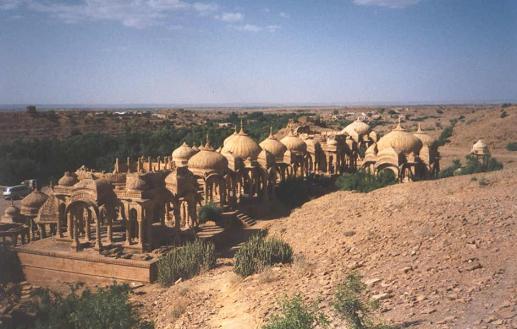 The history of Rajasthan is a history of various kingdoms and their regular wars with one another. It wasn't until the mid-sixth century that the brave Rajputs, warriors par excellence, came to dominate the region and wrote the most glorious chapters of history with their blood and blade. Rajasthan was divided into kingdoms and the valiant Rajputs kept themselves busy with skirmishes amongst the neighboring kingdoms or else they faced the Turks, the mighty Sultans of Delhi lasted Sultanate and later the Great Mughals.
The history of Rajasthan is a history of various kingdoms and their regular wars with one another. It wasn't until the mid-sixth century that the brave Rajputs, warriors par excellence, came to dominate the region and wrote the most glorious chapters of history with their blood and blade. Rajasthan was divided into kingdoms and the valiant Rajputs kept themselves busy with skirmishes amongst the neighboring kingdoms or else they faced the Turks, the mighty Sultans of Delhi lasted Sultanate and later the Great Mughals.The conflict between the Rajputs and the Muslims Rulers of Delhi lasted for almost 550 years. This period saw the rise of Prithvi Raj Chauhan Maharani Padmini, the beautiful queen of Rana Rattan Singh of Chittaur, Rana Sangha, Man Singh of Ajmer and Rana Pratap of Chittaur, and scores of other names which became hallowed in folk memory. It was a period of fierce loyalties and of death before dishonour. It is this period in the history of Rajasthan that continues to live on in the proud inhabitants of this region and gives it a special charm of its own, unmatched by any other place, anywhere in the world. Maharana Pratap Singh, legendary sixteenth century Rajput ruler of Rajasthan. The iconic Mehrangarh Fort built by Rao Jodha in 1459. The Chittorgarh Fort is one of the largest fort in Asia. Hawa Mahal or "Palace of Winds" in Jaipur.The Indus Valley Civilization, one of the world's first and oldest civilizations, was located in part of what is now Rajasthan. Kalibangan in Hanumangarh district, Rajasthan was a major provincial capital of the Indus Valley Civilization.[1] Traditionally the Rajputs, Yadavs, Jats, Bhils, Gujars, Meenas and other tribes made a great contribution in building the state of Rajasthan. All these tribes suffered great difficulties to protect their culture and the land. Millions[2] of them were martyred for this land. ‘The Hinduan Suraj’ title to Udaipur was only due to Sisodia Rajputs. Gujars had been exterminated in Bhinmal and Ajmer areas fighting with the invaders. Bhils once ruled Kota and Bundi. Bargujars were sardars in Alwar, Jodhpur and Ajmer areas.[2] Bargujars and Meenas were ruler of Dhundhar region, Bundi. 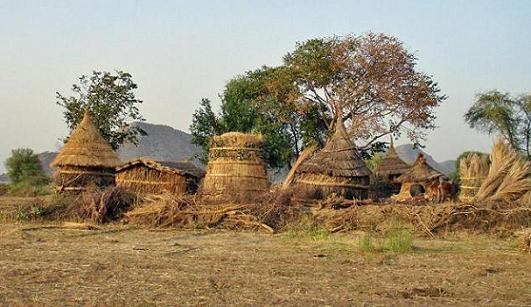 The earlier contributions of warriors and protectors of the land — Bargujars, Jats, Bhils, Gujars and Meenas — were neglected and lost in history.[3] Rajasthan means the Land of the Kings. Modern Rajasthan includes most of Rajputana, which comprises mainly the erstwhile Rajput kingdoms as well as two Jat kingdoms and a Muslim kingdom.Jodhpur, Bikaner, Udaipur, and Jaipur were some of the main Rajput states. The Jats were rulers in Bharatpur and Dholpur. Tonk was ruled by a Muslim Nawab. Rajput families rose to prominence in the 6th century CE. The Rajputs put a very valiant resistance to the Islamic invasions and protected this land with their warfare and chivalry for more than 500 years. They also resisted Mughal incursions into India, but contributed to the slower than anticipated access to the Indian Subcontinent. Later The Mughals, with a technique based on the combination of treachery and skilled warfare were able to set firm grip on northern India. The fighter spirit and valour of Rajputs impressed the Mughals to such an extent that they started treating their Rajput aides as the backbone of their Kingdom.Even after defeating, the Mughals took Rajput valour and value in highest esteem.
The earlier contributions of warriors and protectors of the land — Bargujars, Jats, Bhils, Gujars and Meenas — were neglected and lost in history.[3] Rajasthan means the Land of the Kings. Modern Rajasthan includes most of Rajputana, which comprises mainly the erstwhile Rajput kingdoms as well as two Jat kingdoms and a Muslim kingdom.Jodhpur, Bikaner, Udaipur, and Jaipur were some of the main Rajput states. The Jats were rulers in Bharatpur and Dholpur. Tonk was ruled by a Muslim Nawab. Rajput families rose to prominence in the 6th century CE. The Rajputs put a very valiant resistance to the Islamic invasions and protected this land with their warfare and chivalry for more than 500 years. They also resisted Mughal incursions into India, but contributed to the slower than anticipated access to the Indian Subcontinent. Later The Mughals, with a technique based on the combination of treachery and skilled warfare were able to set firm grip on northern India. The fighter spirit and valour of Rajputs impressed the Mughals to such an extent that they started treating their Rajput aides as the backbone of their Kingdom.Even after defeating, the Mughals took Rajput valour and value in highest esteem.The Marwaris (people from Marwar) and Rajasthan's formerly independent kingdoms created a rich architectural and cultural heritage, seen today in their numerous forts and palaces (Mahals and Havelis) which are enriched by features of Muslim and Jain architecture. The development of the frescos in Rajasthan is linked with the history of the Marwaris, who have also played a crucial role in the economic development of the region. Most of the wealthiest families throughout Indian history have links to Marwar. These families include the legendary Birla, Bhandari, Bajaj, Mittal, Agrawal and Khandelwal families. 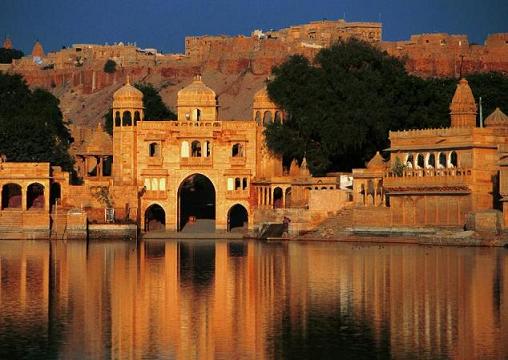 Mewar led others in resistance to Muslim rule : Rana Sanga fought the Battle of Khanua against Babur, the founder of the Mughal empire; and Maharana Pratap Singh resisted Akbar in Haldighati, the Bhils were Rana's main allies. Most of these attacks were evenly met as the Mughals outnumbered Rajputs in great numbers in all the wars fought between them. The Haldighati war was fought between 10,000 Rajputs and 1,00,000 Mughal force. Over the years the Mughals began to have internal disputes which took their concentration away at times. They also had to fight off Pathan warriors from neighbouring Afganistan and the newer enemy, the British Empire which consisted of large numbers of natives whilst engaging against various other regional powers such as the Persians. The Mughal Empire eventually weakened to which several groups across their kingdom (including Sikhs) saw opportunities to establish their power whilst the army was fighting somewhere else. The Rajputs saw this as an opportunity to reassert their independence. With the decline of the Mughal Empire in the 18th century, Rajputana came under attack by the Marathas and Pindaris, and the Maratha general Scindia captured Ajmer. The Rajput kings following a rapid defeat, concluded treaties with the British in the early 19th century, accepting British sovereignty in return for local autonomy. Following the Mughal tradition as well as its strategic location Ajmer became a province of British India, while the autonomous Rajput states, the Muslim state Tonk, and the Jat states (Bharatpur and Dholpur) were organized into the Rajputana Agency.
Mewar led others in resistance to Muslim rule : Rana Sanga fought the Battle of Khanua against Babur, the founder of the Mughal empire; and Maharana Pratap Singh resisted Akbar in Haldighati, the Bhils were Rana's main allies. Most of these attacks were evenly met as the Mughals outnumbered Rajputs in great numbers in all the wars fought between them. The Haldighati war was fought between 10,000 Rajputs and 1,00,000 Mughal force. Over the years the Mughals began to have internal disputes which took their concentration away at times. They also had to fight off Pathan warriors from neighbouring Afganistan and the newer enemy, the British Empire which consisted of large numbers of natives whilst engaging against various other regional powers such as the Persians. The Mughal Empire eventually weakened to which several groups across their kingdom (including Sikhs) saw opportunities to establish their power whilst the army was fighting somewhere else. The Rajputs saw this as an opportunity to reassert their independence. With the decline of the Mughal Empire in the 18th century, Rajputana came under attack by the Marathas and Pindaris, and the Maratha general Scindia captured Ajmer. The Rajput kings following a rapid defeat, concluded treaties with the British in the early 19th century, accepting British sovereignty in return for local autonomy. Following the Mughal tradition as well as its strategic location Ajmer became a province of British India, while the autonomous Rajput states, the Muslim state Tonk, and the Jat states (Bharatpur and Dholpur) were organized into the Rajputana Agency.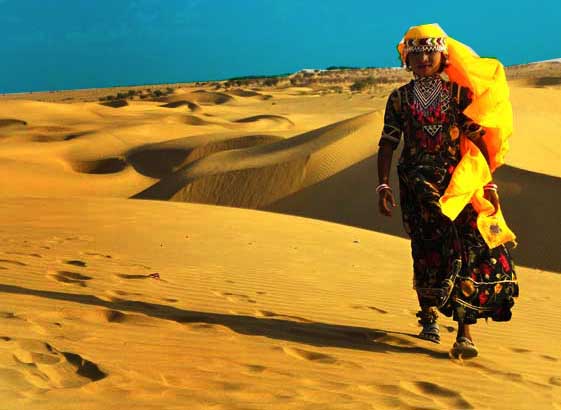 Brave Rajputana King
Brave Rajputana KingLand of people who are brave and chivalrous, people with a warlike lifestyle around whom grew the most amazing legends of romance ad heroism. There is a certain magic about traveling through Rajasthan which is unequalled by any other place in the world. It is a land of superlatives - everything here is breathtakingly beautiful, impressive and fascinating. It is packed with history, art and culture that goes back several centuries. Rajasthan where the mood and rhythm is so overpowering that is impresses even the most seasoned traveler. It has rightly been called a huge open air museum where the relics of a golden past have bee carefully preserved for the benefit of the tourist. It has something for almost every kind of traveler - for those looking for an active, action-packed holiday there are several places which allow one to enjoy the great outdoors, there is trekking, there are horse and camel safaris through desert sands or along the Aravallies - the oldest mountain range in India. take a royal tour and live like a Maharaja or spend a peaceful and quiet holiday in one of the several off-beat destinations in historic towns, wildlife lovers can spot tigers and other rare species in various wildlife sanctuaries. It is well connected with other parts of the country and can be easily approached from Delhi ad Bombay. Fast trains, direct bus and air connection make travel easy and comfortable. Rajasthan is a land where the past still lives on and it is a glorious past, too. It is for this great land that Col. James to add, the writer of "The Annals and Antiquities of Rajasthan" has written, "Rajasthan exhibits the sole example in the history of mankind of a people with standing every outrage barbarity can inflict or human nature sustain, ad bent to the earth, yet rising buoyant from the pressure ad making calamity a whetstone to courage." The annals of Rajasthan present golden examples of countless deeds of velour and selfless sacrifice. A visit to this wonderland will leave a lasting spell on your mind. 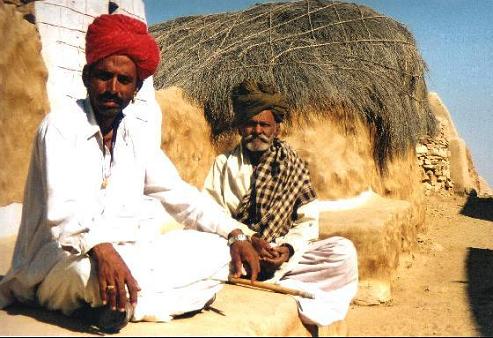 North West of the Aravallis are the Jodhpur, Jaisalmer, Barmer and Bikaner regions, it is the home of arid plains and the shifting sad dunes of the great Thar desert. Covering a total area of 196,150 sq km, the hard compact earth here is covered by shifting sand dunes and sparsely dotted with scrub and thorny babool. Water levels are very low and have been for so many centuries. The Italian traveler Manucci, one of the several visitors who came to this area and put their impression on record, came over to this region in the 17th century and noted :
Rajasthan has a total area of 343,000 sq km and the most striking feature of this land is its division by the majestic Aravalli range which runs from north-east to south-west for about 688 km. It is the backbone of the state ad divides it into two regions which totally different geographical features.
"Wells are so deep that when water is drawn out of them with the help of oxen, those who set these animals to work beat a drum as a warning" that the pot is the mouth of the well and they are about to draw water."
North West of the Aravallis are the Jodhpur, Jaisalmer, Barmer and Bikaner regions, it is the home of arid plains and the shifting sad dunes of the great Thar desert. Covering a total area of 196,150 sq km, the hard compact earth here is covered by shifting sand dunes and sparsely dotted with scrub and thorny babool. Water levels are very low and have been for so many centuries. The Italian traveler Manucci, one of the several visitors who came to this area and put their impression on record, came over to this region in the 17th century and noted :
Rajasthan has a total area of 343,000 sq km and the most striking feature of this land is its division by the majestic Aravalli range which runs from north-east to south-west for about 688 km. It is the backbone of the state ad divides it into two regions which totally different geographical features.
"Wells are so deep that when water is drawn out of them with the help of oxen, those who set these animals to work beat a drum as a warning" that the pot is the mouth of the well and they are about to draw water."Yet this land with its relentless carpet of sand and arid desert is neither barren nor uninhabited. If anything, the dryness and the heat of this region, the colourless surroundings have driven the people to fill their lives with dramatically brilliant colours. In fact, the colourfully dressed women against the stark backgrounds in one of the first and most lasting of all impressions that one may have to this state. Nothing really seems to dim their zest for living. The harsh dry climate has, however, forced the people to evolve a semi-nomadic lifestyle; when survival becomes difficult these people move out with their cattle to more welcoming pastures, some use their skills as folk performers to earn a livelihood. The wanderers leave their homes but carry the desert and its history in their hearts and follow each custom scrupulously. They may move far away from their land but never move away from their culture. When the desert is a little more welcoming it becomes a rearing ground for camels, cows and buffaloes. Lack of vegetation has been compensated for by the health of minerals that are to be found in several parts of this fascinating region. The other side of the hills is a land rich is vegetation. Aravalli, or, a beam lying across, has a greater presence here. Hard granite rocks, scattered hillocks, areas rich in silver, zinc and lead deposits. There are also long stretches of dense forests, lush green valleys are fertile fields. This area is drained by several rivers - the most important being the mighty Chambal river which hurtles through the rocky terrain of the Hadoti region. Geologically, many areas in Rajasthan are older than the Himalayas therefore it was only natural that civilization came to Rajasthan much before it came to the rest of India. Excavations at Kalibangan, in Ganganagar district, prove that a fully developed and organized society was in existence in that area much before the Harappan culture. Numerous other prehistoric and proto-historic sites exits in Rajasthan. 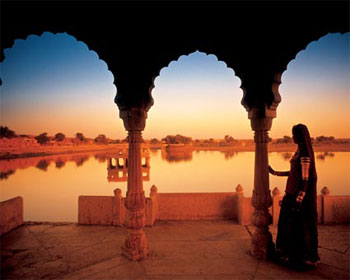 Economy of Rajasthan
Economy of RajasthanIndustrial plant near Jodhpur, Rajasthan.Rajasthan's economy is primarily agricultural and pastoral. Wheat and barley are cultivated over large areas, as are pulses, sugarcane, and oilseeds. Cotton and tobacco are cash crops. Rajasthan is among the largest producers of edible oils in India and the second largest producer of oilseeds. Rajasthan is also the biggest wool-producing state in India and the main opium producer and consumer. There are mainly two crop seasons. The water for irrigation comes from wells and tanks. The Indira Gandhi Canal irrigates northwestern Rajasthan. The main industries are mineral based, agriculture based, and textiles. Rajasthan is the second largest producer of polyester fibre in India. The Bhilwara District produces more cloth than Bhiwandi, Maharashtra. Several prominent chemical and engineering companies are located in the town of Kota, in western Rajasthan. Rajasthan is pre-eminent in quarrying and mining in India. the Taj Mahal was built from the white marble which was mined from a town called Makrana. The state is the second largest source of cement in India. It has rich salt deposits at Sambhar, copper mines at Khetri and zinc mines at Dariba, Zawar mines at Zawarmala for zinc, rampura aghucha (opencast) near Bhilwara. Dimensional stone mining is also undertaken in Rajasthan: Jodhpur sandstone is mostly used in monuments, important buildings, residential buildings, etc. This stone is termed "chittar patthar". Rajasthan is now the preferred destination for IT companies and North India's largest integrated IT park is located in Jaipur and is named as Mahindra World City Jaipur covering nearly 3,000 acres (12 km2) of land. Some of the companies operating in Rajasthan include Infosys, Genpact, Wipro, Truworth, Deutsche Bank, NEI, MICO, Honda Siel Cars, Coca Cola, Gillette etc. |

